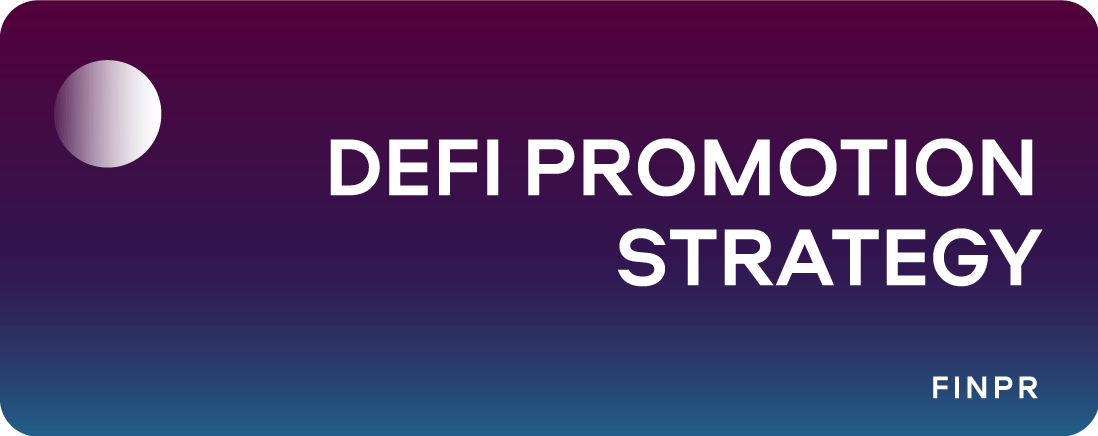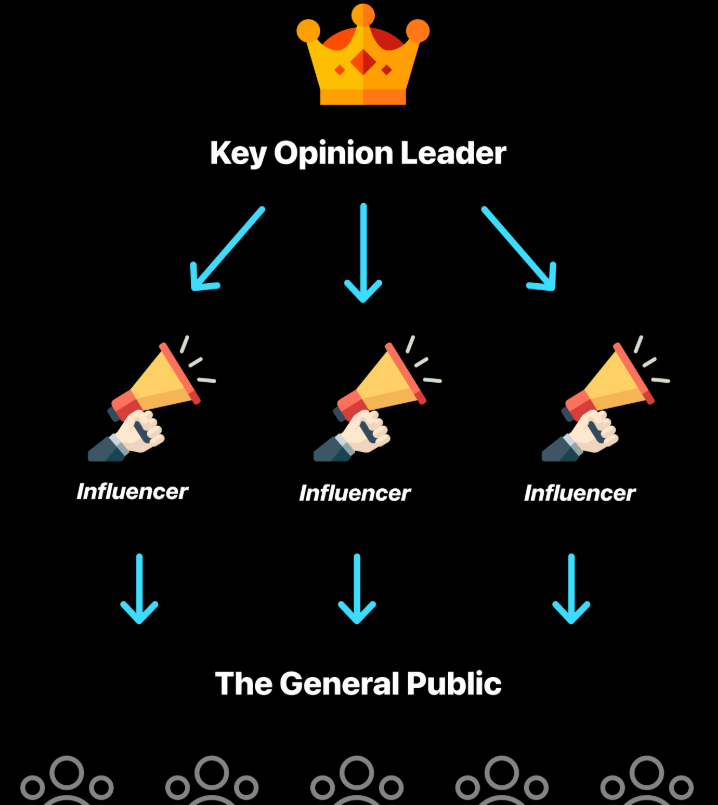
The DeFi space is exploding with innovation, but standing out amid international competition demands more than just a great protocol. It requires a carefully crafted promotion strategy that resonates with a global audience. The following insights reveal how expert marketers drive growth for DeFi projects around the world.
The Booming DeFi Landscape
DeFi’s rapid expansion is evident in recent data. Decentralized finance activity surged by over 532% in 2024, reaching roughly 7 million daily unique active wallets worldwide. DeFi’s total value locked (TVL) also climbed to approximately $214 billion – nearing its late-2021 peak. This explosive growth underlines the immense opportunity for new DeFi platforms, but it also means heightened competition.
Projects are emerging across the globe, from the U.S. and Europe to booming crypto markets in Asia and Africa. For a DeFi startup or protocol to stand out, a well-rounded marketing strategy is essential. It’s not just about short-term hype or token price spikes; sustainable success comes from building trust, educating users, and engaging communities across multiple channels.
Organic Marketing Strategies in DeFi
Organic promotion focuses on building awareness and user acquisition without direct advertising spend.
- A cornerstone is search engine optimization (SEO) – ensuring that when users search for solutions or questions in the crypto space, your DeFi project appears prominently. Ranking high on Google for relevant keywords can continuously attract investors, users, and partners. Start by optimizing your website’s technical structure and creating quality content to capture relevant search traffic.
- Leverage high-authority content platforms to amplify reach. After a major 2024 Google update, content on Medium and LinkedIn Pulse gained significant visibility – so regularly publishing articles on these platforms can funnel readers into your project’s ecosystem. By creating valuable, informative content, you not only improve SEO but also establish credibility as an industry expert.
- Another key organic tactic is public relations (PR) within crypto and fintech circles. A well-timed press release or feature story in reputable media can raise your project’s profile enormously. Aim to tell a compelling story about the real-world problem your DeFi solution solves or highlight milestones like security audits and partnerships. Coverage on popular crypto news sites or newsletters introduces your platform to engaged readers and carries an implicit endorsement. This kind of earned media often proves more persuasive than ads, since it comes with third-party credibility.
- Also consider strategic partnerships and alliances as part of organic growth. Teaming up with other DeFi protocols or blockchain platforms for co-marketing can expose your project to new audiences. Whether it’s a technical integration or a joint promotional event, partnerships allow you to tap into an established user base that aligns with your own. Such alliances demonstrate commitment to the broader ecosystem and build trust by association.
- Finally, implement referral programs and community incentives to harness word-of-mouth. Early adopters of DeFi are often passionate and well-connected; by rewarding them for inviting new users, you turn your community into your marketing force. A referral program (where existing users get bonuses for bringing in friends) can spark organic growth at a low cost. Many successful crypto platforms, from exchanges to wallets, grew rapidly through referral bonuses.
Content Marketing: Educate and Engage
In the DeFi realm, content is much more than a marketing afterthought – it’s a vital tool for user education and trust-building. Successful projects invest in content marketing to demystify complex financial concepts and showcase real use cases.
A people-first content approach is best, focusing on high-value resources that make decentralized finance accessible. For instance:
- #1. Publishing guides and tutorials helps potential users understand how to use your platform or the basics of yield farming, liquidity pools, and other concepts.
Simplifying complicated ideas into digestible articles or videos is key. When users find answers and insights through your content, they’re more likely to trust your platform and see it as a thought leader in the space.
- #2. Diversify content formats to reach people on different channels.
Use a mix of blogs, infographics, and videos to cater to different preferences – a quick infographic might hook casual followers, while a detailed case study can appeal to serious investors. Maintain a consistent schedule (editorial calendar) to keep content flowing, which reinforces your message and boosts your visibility over time.
Don’t just publish on your own site.
- #3. Leverage external platforms to extend your reach.
Many DeFi teams maintain blogs on Medium and contribute thought pieces to publications like HackerNoon or industry forums on LinkedIn. These sites have built-in audiences and high trust. Notably, Medium and LinkedIn articles often rank well on Google, which is useful if your own domain is still gaining authority. Be sure to guide readers from those external articles back to your website or app so they can take the next step.
- #4. Use content to address user concerns and highlight value.
Topics like security practices, regulatory compliance, and risk are top of mind for potential users – covering these openly in your content shows transparency and builds confidence. Share progress updates and even setbacks candidly; this level of openness is appreciated in the crypto community.
Influencer Marketing and KOL Partnerships
In the age of crypto social media, influencer marketing has become a powerful way to promote DeFi projects.

Key Opinion Leaders (KOLs) have built large followings on platforms like Twitter, YouTube, and Telegram by sharing market insights, tutorials, and opinions. Partnering with the right influencers can rapidly expand your reach to tens of thousands of potential users who trust those voices. Studies show that about 69% of consumers trust influencers more than direct brand messaging, and 89% of businesses report higher ROI from influencer campaigns than from other channels. In the DeFi context, this trust factor is critical. Users are far more likely to try a new protocol if it’s endorsed by a personality they respect.
- To leverage influencer marketing, first identify KOLs who align with your project’s niche and values. Look for influencers who genuinely engage with DeFi topics similar to your project – whether it’s a YouTuber explaining yield strategies or a Twitter analyst known for evaluating new protocols.
- Reach out with a polite, personalized proposal. Often, offering the influencer a trial of your platform or early access to a feature can pique their interest. Emphasize the mutual benefit: they get fresh content and maybe compensation, while their audience gets introduced to a useful project. Authenticity is paramount; the collaboration should feel natural. Ideally, an influencer will actually use your platform and share their honest experience, rather than read a script. This might take the form of a sponsored tutorial, a review, or a live stream demonstration.
- Using a mix of big-name personalities and smaller niche influencers can help cover different segments of the market, across platforms from Twitter to YouTube to Telegram.
- Always handle these partnerships transparently. Ensure any paid promotion is disclosed by the influencer to maintain trust with the audience. The crypto community is quick to call out shilling if something seems off.
By being open about the collaboration, you actually build credibility – it shows the influencer chose to work with you and that you value ethical marketing. When executed correctly, influencer partnerships not only drive user sign-ups in the short term but also boost long-term brand awareness through social proof.
Paid Advertising in the Crypto Space
While organic methods are invaluable, paid advertising can accelerate growth – if executed carefully. Traditional digital ad platforms have strict policies for cryptocurrency promotion. For instance, Google allows ads for crypto exchanges and wallets only with proper registration and certification, and it still bans ads for initial coin offerings or DeFi token sales.
Facebook (Meta) similarly permits certain crypto ads after thorough vetting of licenses and compliance. On the other hand, some platforms like TikTok outright ban crypto-related ads. This means DeFi marketers must navigate compliance carefully when using mainstream channels – always follow the latest rules and secure any required approvals to avoid account suspensions.
Despite these hurdles, paid promotion is possible and can be effective. Crypto-specific advertising networks have emerged to fill the gap left by big tech. Services like Coinzilla, Bitmedia, and others specialize in running ads on crypto-focused websites and apps. These networks place your ads on popular crypto sites and even within other dApps, directly targeting users already interested in blockchain. Many offer programmatic tools for granular targeting (by region, interest, or even on-chain behavior), making your spend more efficient.
Consider sponsored content as well – for example, paying for a feature article or newsletter mention on a respected crypto outlet. This blends advertising with education, presenting your project’s strengths in a context readers trust. When running paid campaigns, craft clear and compliant messaging. Focus on real value propositions (e.g. lower fees, better yields, unique features) and avoid hyperbolic claims. Always include any necessary disclaimers about risks, and track performance metrics (click-through rates, conversion, cost per user) closely. Use that data to refine your ad strategy over time and maximize ROI.
Remember to integrate paid ads with your broader marketing funnel. By balancing paid advertising with organic efforts, a DeFi project can gain quick visibility while still building a loyal, engaged user base.
Leveraging Social Media Platforms
Social media is the glue that connects all facets of DeFi marketing – it spreads content, powers community conversations, and amplifies influencer messages. However, not all platforms are equal for reaching crypto-savvy audiences.
A 2024 survey by CoinGecko revealed that the vast majority of the crypto community spends its time on just a few key platforms: about 42% on Twitter (now X), 21.5% on Telegram, and 20.8% on YouTube. These “big three” accounted for roughly 84% of crypto social engagement, whereas others like Discord (~7%) and Reddit (~5%) were smaller by comparison. To maximize impact, focus your efforts where your audience is most active.
X (Twitter)

X (Twitter) is often considered the heartbeat of the crypto world (“Crypto Twitter”). For a DeFi project, maintaining an active Twitter presence is a must. Use it to share news, product updates, and commentary on industry trends (using relevant hashtags like #DeFi). It’s also a channel for real-time engagement – responding to questions or joining discussions increases your visibility and shows that your team is listening.
Telegram
Telegram serves as a primary hub for many crypto communities. It’s ideal for real-time group chats and broadcasts, but Telegram groups can grow quickly – so assign moderators to keep discussions on-topic and scam-free. Some projects even run multiple Telegram channels for different languages or updates.
YouTube
YouTube is powerful for long-form content and reaching those who prefer video learning. Hosting a YouTube channel with explainer videos, demos of your dApp, recorded AMAs, or weekly updates can engage users who want more depth. Visual content is especially helpful for walkthroughs – for example, showing how to connect a wallet and use your platform step-by-step can greatly increase user confidence.
Discord & Reddit
Discord and Reddit are also important for specific segments. Discord is popular among developer and DAO communities, allowing structured channels for support, development updates, and even governance discussions. Reddit offers a forum for longer-form discussion — a dedicated subreddit lets you post updates and address questions in a transparent, archived manner.
Finally, LinkedIn can help with professional outreach to investors or partners. The key across all social platforms is to tailor your message to each channel’s style while keeping a consistent brand voice. By engaging users on the social channels they frequent most, you ensure your DeFi project stays in the conversation and builds a diverse global following.
Final Takeaways
Founders and marketers should continuously monitor what resonates with their audience and be ready to adapt. Crypto trends shift rapidly; a platform popular today might be eclipsed by a new one next year, and regulatory changes can alter what marketing methods are viable. By keeping a close eye on community feedback and engagement metrics, you can refine your strategies in real time – doubling down on what works, and tweaking or dropping what doesn’t.
Whether you’re a fledgling startup or an established protocol, the strategies outlined above provide a roadmap to amplify your reach. In sum, blending creative organic tactics with smart paid campaigns – while nurturing a passionate community – positions a DeFi project to thrive.




